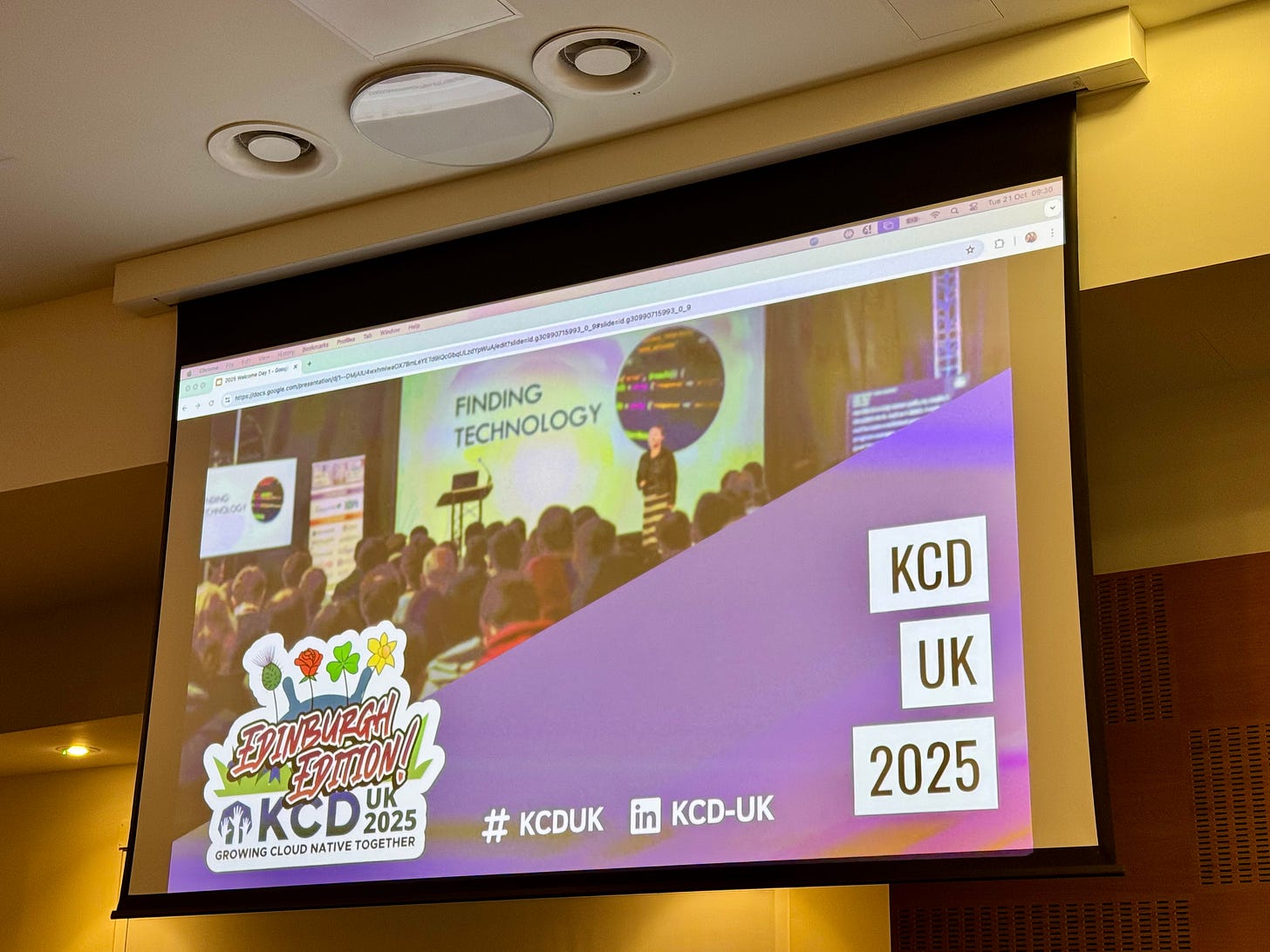Learning Kubernetes: Nodes, Pods, Karpenter, KEDA, Community Days UK, and more!
Reflecting on the past week educating myself on the second largest open-source project.
Hello, and welcome to my third publication for a series of blog posts about all things new to me in the world of software development. If you missed my previous blog post, I recently dived into the Go programming language after starting a new opportunity at Monzo Bank. Just over one month into this new chapter, I’ve found myself having a particularly busy week with a focus on the job as well as learning about the world’s second largest open-source project after the Linux operating system: Kubernetes.
🎧 Listening to How Kubernetes is Built
What better way to spend a commute from Edinburgh to London other than listening to The Pragmatic Engineer podcast? is a great host interviewing many well known names across the software community. Scrolling through episodes of the podcast from earlier this year, I stumbled across an episode from 14th May: “How Kubernetes is Built with Kat Cosgrove”. If you haven’t already, I highly recommend listening to this interview to hear how Kubernetes was born, and how the open-source community contributes to Kubernetes today. Below is a link to the podcast.
Spoiler: I’ll share a few of my key takeaways from the podcast, so if you would rather skip this and wait until you listen to the interview in full, do jump to the next heading below. Credit to Kay Cosgrove, Gergely Orosz, and everyone else involved in the making of this podcast episode for sharing these insights.
Firstly, Kubernetes derives from an Ancient Greek word for “helmsman” or “pilot”, which explains why the Kubernetes package manager is called Helm.
Over 1,000 individuals contribute to Kubernetes per month. Regular contributors over time, if they so wish, may be promoted to “maintainers” to lead project work.
Release cycles for Kubernetes are every 14-16 weeks depending on the time of year. For each cycle, a team of 20-25 applicants are appointed to own the release.
💬 Kubernetes Community Days UK
On the theme of Kubernetes - often abbreviated to K8s - I also attended a conference this week in my home city of Edinburgh: Kubernetes Community Days (KCD) UK. Hosted in the John McIntyre Conference Centre (JMCC) within the University of Edinburgh’s Pollock estate, it was a pleasure to spend two days listening to great talks about Kubernetes and the wider Cloud Native Computing Foundation (CNCF), as well as network with new and familiar faces within the software development community.
Throughout the conference there was excellent quality material. A particular shout-out to a few speakers I’ve met in a personal capacity either before or during the event:
Miles Bryant and Dom Goodwin on behalf of Monzo Bank covered “Payday Pandemonium: How Monzo Survives a Daily Self-Inflicted DDoS”, which explored in depth how Monzo scales to support its “Get Paid Early” offering.
Marko Bevc, Principal Consultant at The Scale Factory, delivered “Embracing Karpenter: To Scale, Optimise, and Upgrade K8s”. Coming into the talk new to Karpenter, I found this talk really valuable to learn what Karpenter can achieve.
Whilst I have plenty notes from the occasion, there were a few key beginner’s lessons I’d like to share:
Nodes vs Pods: Pods reside within Nodes, and a Node may host many Pods. For more detail, the Kubernetes documentation provides a good introduction.
Karpenter is valuable for managing the load and scheduling of Nodes, whilst KEDA builds upon Kubernetes’ Horizontal Pod Autoscaling (HPA) functionality.
Be cautious autoscaling clusters on CPU utilisation, given this doesn’t illustrate which processes are actively running vs those waiting. Credit goes to Christian Melendez for their talk about “Performance-Aware Autoscaling on Kubernetes”.
🧑🏻🏫 Talking about Change Data Capture
If attending two days of conference didn’t fill my networking quota, I also spoke at the latest Edinburgh Meetup for “At Least Once: Event-driven Software Architecture”, which I co-organise with Paulė Akramaitė-Dean. A huge shout-out goes to Addepar and specifically to Amie Johnston and Ryan McKay for hosting us, as well as Kevin Holsgrove for speaking at the event. We had a great turn-out and I’m pleased to say that feedback has been really positive so far - even if I did finish earlier than planned!
The subject I covered was “Processing Data Changes from Amazon Databases in near-real time”. In short, I focused on two different AWS offerings called DynamoDB and Relational Database Service (RDS), and how in each service we can react to changes in persisted data in near-real time with sub-second latency. Great questions were raised about de-duplication, the ordering of data change events, and how we manage large volumes of data, especially in the case of RDS or relational databases more generally.
If the At Least Once meet-up sounds of interest to you, do join the group via Meetup for updates about future events. We’re planning to run our next session early in 2026 with a firm date for calendars available later this year.
📣 Announcements
My squad at Monzo Bank is hiring! We’re looking for a Senior Platform Engineer with experience in Machine Learning to come work with me on the Machine Learning Platform. This vacancy is open to fully remote candidates in the UK.
EdinburghJS JavaScript is hosting its next meet-up on Tuesday 18th November, where Jamie Barton will give a talk about SQLite with Turso. This event will be live-streamed as well as in-person at TravelPerk’s office. You can RSVP here.
A special thanks goes to Scottish Technology Club for sharing my previous blog post focusing on Go. The club emails a weekly bulletin with updates about the Scottish software community. You can subscribe to news via their website.
📝 Feedback
Have you found this blog post valuable? Is there anything missing that would be good to consider going forward? Feedback is always welcome by leaving a comment below. Do also subscribe if you would like to receive future blog posts directly in your inbox.



